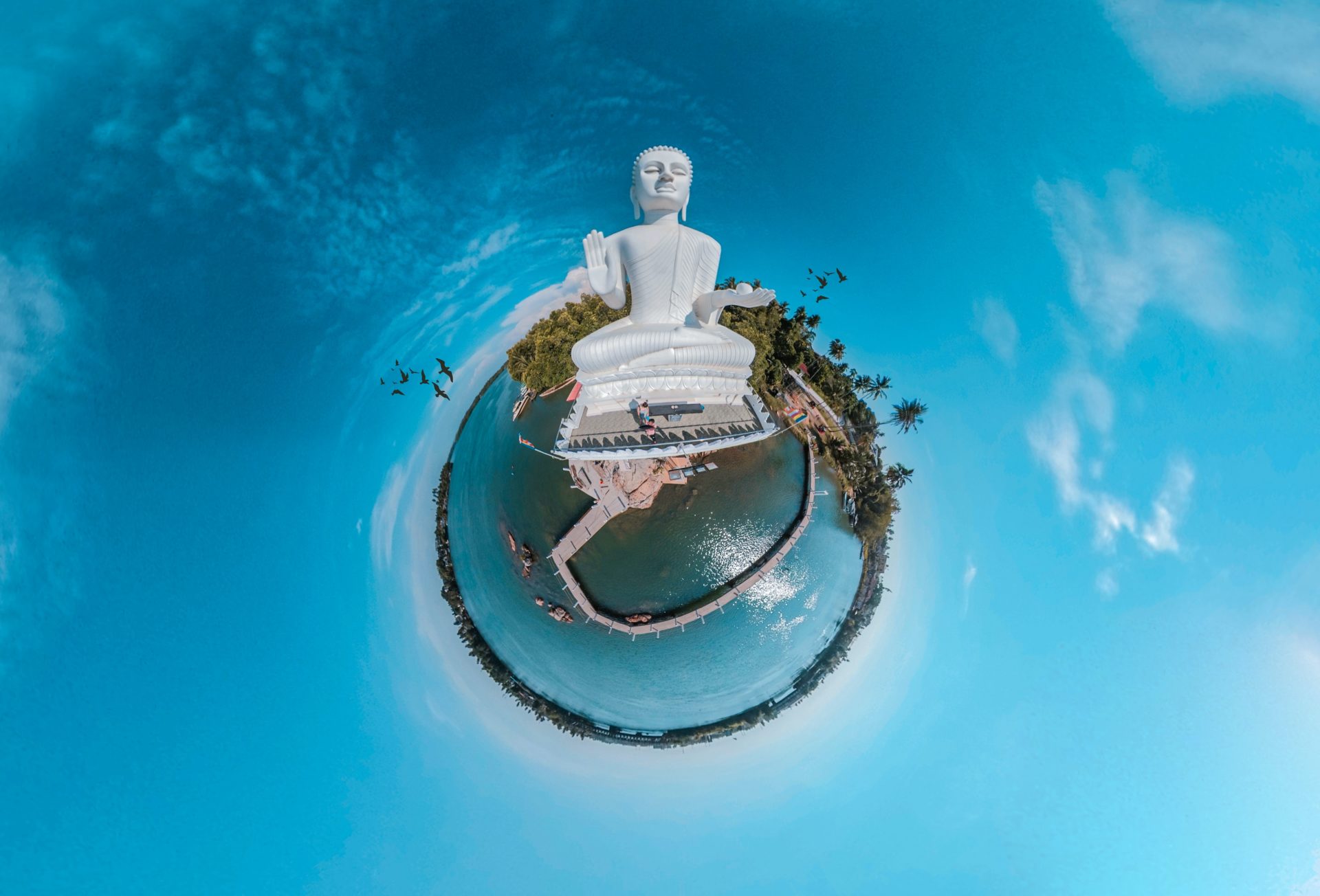User Account
Continue readingAstrology Reading Donation
Astrology Reading Donation Thank you for your interest in donating your reading to the FCEA for educational purposes. Please only offer to donate already existing recorded readings provided to you by Steven Forrest. It is not for new readings, as Steven’s waiting list is many years into the future and is currently closed. We appreciate […]
Continue readingA New Project for the School
A New Project for the School
Master’s Musings, December 2023
A New Project for the School
Some people are simply perpetual students of astrology. They love our ancient art and they can’t get enough of it – and when it comes to something you can’t get enough of, astrology is as good as it gets since the field is practically infinite in scope. Those eternal students are welcome in our school – we know that not all of us are set on becoming practicing, counseling astrologers, and that’s fine. But of course for many of us, our aim is to use our astrological education to start making a difference in other people’s lives, perhaps even doing astrology professionally. While we welcome everyone, our school is specifically geared with that counseling intention in mind – and that leads us directly to a basic challenge: learning astrology theoretically is one thing, but learning to present consultations to the general public is another.
When it comes to sitting confidently with clients, there’s no substitute for practice. Your voice will become more fluent – and more your own – over time. To help you get there, we also have our more advanced courses. For example, we just finished our first master class, which was a big success. Our counseling course will open up soon too. Together, those courses will help prepare you for “the real world” of working with clients.
What this newsletter is about is that we are planning another way to support you in getting there.
The purpose of the FCEA is not to “clone” me – well, at least not exactly. Obviously there is some of that “cloning” in the mixture. My long-term hope has always been to help everyone in the school “stand on my shoulders” – then once they’ve taken in the view, to see things I’ve never seen or figured out myself. Astrology is vast, but over the years I’ve whittled its corpus down to some core techniques that are powerful, robust, and meaningful enough to enough people that you can build a popular practice with them. In the school, we put blinders on you and aim you toward mastery of that single approach – a process that takes three or four years, thus shaving centuries off the impossible process of “learning everything about astrology.”
Once you’ve neared the end of your FCEA training, you’ve won half the battle: you’ve got the theory down. The next stop is finding your own voice. Again, some of our advanced courses will help you with that process, but we are in the middle of planning another way to support you. We intend to create a library of actual readings that I have done. Here’s how it will work – or at least how we hope it will work. Getting there will require your help.
INTRODUCING CIRCLE – A NEW FCEA COMMUNITY FORUM
We have exciting news for 2024! We will soon have Circle implemented – a sort of private social media “watering hole” for the school. It’s being created as a space for the FCEA community to connect and communicate with one another in a fun and informal environment, and will also include a library of videos and other materials.
We are also hoping that this new community forum will create a wonderful replacement for our discontinued study group calls. Although the study group calls have had a low participation rate (only 10%), we understand that the 10% of students who did attend them valued them very much. Yet the low participation rate did not make them sustainable for the school. We trust that our new offerings through Circle will offer everyone a new means of inspiration and an even more sustainable (and hopefully broader) community connection. It will also better serve our international student body who reside in a wide variety of different time zones, as Circle will be available 24/7. Once we open this online gathering space in early 2024, everyone will be able to engage with the platform to some extent.
We realize that the past distinctions between Student and Member were confusing, especially because we have always considered every student an integral member of the FCEA Community, whether or not they had paid for the additional benefits of FCEA Membership. So, from now on, everyone will be considered a Community Member—as we introduce two levels of membership: the FCEA Membership (free) and the FCEA Premium Membership (for an annual fee) which will feature enhanced memberships benefits.
Here’s how all of this will work: Everyone who registers for an FCEA account on our website is able to watch Free Community Calls available on forrestastrology.center – and now they’ll also be able to create a free FCEA account on the Circle platform. FCEA Members who purchase the Premium Membership will be invited to attend all of the FCEA’s live Monthly Q&A calls with me (which are included in our courses for current students) and have the opportunity to continually chat and comment as a community within the Circle platform. Premium Members will also be able to access all previous Q&A Calls (from December 2020 through the present day) on Circle, and chat and comment there as a community, continually.
Premium FCEA Members who are also students at the 201 Level and above, and including FCEA graduates, will gain special access to a rotating library of donated recorded Steven Forrest readings.
CALLING FOR VOLUNTEERS
Over the years, many of you have had me do private readings. We would like to ask if you might consider sharing them with the school. Immediately I want to underscore that this would be completely voluntary, with no pressure implied. For totally understandable reasons, many of you will want to keep those recordings confidential. Again, no pressure!
If you do decide to help, we will keep everything confidential, at least with the boundaries of the school. But I often use people’s names – at least their first names – in the readings. And naturally we would need your chart as well. We can delete last names from them. We could even delete birth data, but it’s often not hard to reconstruct it from a chart. The reality is that other students would often “know it was you.” We want to be transparent about that. Sometimes when I do a reading for someone, they’ve shared sensitive information with me in advance. I may reference it directly in the recording. If anyone in that situation prefers not to share the reading, we support you 100%. In fact if anyone prefers not to share their readings for any reason at all, that’s fine too – yet again: no pressure!
For legal and ethical reasons, we will have anyone who volunteers their recording sign a waiver granting the school the right to use the material.
Naturally, we’d be interested in all kinds of readings – a birthchart analysis, transits/progressions, even synastries. We welcome any and all of your submissions through this online reading donation form.
We hope you will consider it, but please don’t do it if you feel ambivalent about it. If we don’t have enough volunteers from within the school, I would plan to put out a more general request on social media. Over the years, I’ve done many thousands of readings for the general public – some of you may actually be reading these words. Depending on the response of our FCEA community, we may or may not reach out more broadly.
Access to these readings will be posted in a limited access area of the new FCEA Circle platform, accessible only to Premium Members who are also active students at the 201 Level and above, and also to graduates of the FCEA who have Premium Memberships. Therefore, these readings will not be available to the general public – it’s strictly for our 201 Level and above student body (who are Premium Members.)
Soon after receiving your reading donation application, we will have a page on the website where you can easily complete the online waiver and securely upload your reading. Thank you so much for your consideration!
SO WHY ARE WE DOING THIS?
 That question brings us right back to whether or not the FCEA is an attempt to “clone Steven Forrest.” I think the most honest answer is “at first yes, and then ultimately no.” And with that said, we swing back to a point I made right at the beginning of this newsletter – first you learn astrological theory, then you find your own voice. Inevitably your voice will at first probably resemble my own at least to some extent.
That question brings us right back to whether or not the FCEA is an attempt to “clone Steven Forrest.” I think the most honest answer is “at first yes, and then ultimately no.” And with that said, we swing back to a point I made right at the beginning of this newsletter – first you learn astrological theory, then you find your own voice. Inevitably your voice will at first probably resemble my own at least to some extent.
Over the years, I’ve developed a huge reservoir of stories, metaphors, and images. They all work well for quickly telegraphing complex astrological ideas across to my clients. I am hoping that if you let some of my readings drone in the background as you drive your car or clean your house, you’ll pick up some of that language. I encourage you to use any of it that you want. I have no proprietary feelings about it – in fact, I probably “stole” half of it myself, except I can’t remember when or from who.
THE TIME TABLE
When will we make this happen? Soon! There are too many wild cards in the mix for us to be more precise than that. Getting Circle up and running – and getting us all signed up for it – is a process that will take a while. Then there’s the unanswered question of how many of you will feel comfortable sharing your readings. We know they’re very personal! So we’ll see how long that takes.
We’ll do this though – and I’m confident that it will be a major piece of the “endgame” of your FCEA education.
Steven Forrest
December 2023
Expansive FCEA Plans for 2024
Expansive FCEA Plans for 2024
Dean’s Update, December 2023
Expansive FCEA Plans for 2024
Solstice is upon us! For those of us in the northern hemisphere, we enter the season of increasing light. I can’t help but think of Jupiter and the hope the planet brings us as we look ahead into 2024. Steven’s recent lecture about the upcoming Jupiter and Uranus conjunction next spring reminded us to “think big” but also not “TOO big.” In other words, we need to claim Jupiter’s gumption but use logic and strategy as well. One never knows when Uranus is involved! It was a pleasure to see so many of you on our recent holiday gathering on Zoom, when Steven spoke about the conjunction. With this timing in mind, let me share with you our FCEA dreams for growth in the year ahead. And, of course, some of the perpetual growing pains we anticipate too.
We have two new projects we will be starting after the New Year:
First, we are initiating an online “library” of chart readings by Steven in honor of the master’s seventy-fifth birthday.
What an honor to sit at Steven’s feet and listen to him dive deep into his work as he reads for a client. We plan to offer one reading a month to our FCEA 200, 300 and 400-level students and graduates. We know many have been waiting for this opportunity to reinforce all the techniques and insights of their FCEA coursework through a chance to listen to Steven in action. In order to make this project successful, we need the help of those in the FCEA community who have received a reading from him in the past and who may be willing to lend a hand by sharing the recording. Do remember it is 100% voluntary! All of Steven’s private work is strictly confidential unless you decide to share it. Please read Steven’s “Master’s Musings” for more information. We would love your help!
The second exciting new project is our Circle platform. Many of you have heard about this endeavor through the FCEA grapevine. Shortly after the New Year, we will take our maiden voyage on Circle, expanding in Jupiter fashion by sharing our experiences with evolutionary astrology in a new social online space.
On Circle, we can engage in lively chat in discussions, explore charts together, and review questions from our classes, all in a process of building a strong community of sharing and learning together. And, once in a while, Steven will join in the Circle conversation. Circle will also be the place where advanced students will find that online library of chart readings once a month, as I mentioned above. Eventually there will be other resources there as the school expands. I’m excited to see Circle in action!
Moving Beyond Study Group Calls
I have other great news to announce: we are growing leaps and bounds! We anticipate a large cohort of new students entering FCEA 103 after completion of the self-guided 101 and 102 courses. We’re proud and excited to have such a large group of future FCEA Apprentices. I will be training new tutors in the spring to help cover our needs as we grow. Please welcome our new students on our course calls and Q&A time with Steven. On a more ambivalent note, in order to accommodate so many new souls into the FCEA, we simply need to move beyond the format of the Zoom study group calls. I know that some of you really love the study group calls, but we just can’t support the expanding enrollment within the space restrictions of the study groups. For those who are sad to see these calls go, I ask you to keep perspective – remember that only about ten percent of our students actually attended these calls in 2023. We want the FCEA to be more supportive of all our students in the learning process and we think that Circle will fill the void in a way that works better for the majority of you.
To assist in this transition, we have several methods of instruction we hope will fill the gap of the missing study group calls. Here’s the most important one – in addition to the new library of readings by Steven and the space with shared conversation on Circle, we are moving ahead with developing further the 101Z and 201Z courses. You might recall we piloted these classes in early 2023. We will be rolling them out as an official part of our course and package offerings via our website after the New Year. I am so pleased to be replacing the study group calls, in response to so many of you who have asked us to improve the outdated structure. The Z classes are designed to include review of 100- and 200- curriculum AND chart analysis, so that all the fun activities of the study group calls will be available, but now with much more tutor involvement and attention.
No longer will we see 100-level students on the same Zoom study group call with the more advanced folks at the 200-level. 101Z and 201Z class size will be limited to a maximum of eight students with an emphasis placed upon tutor support in an intimate, small Zoom classroom. We will require tuition for the Z classes to allow us to provide a better classroom experience and more focused tutor attention. For those who love our community on Zoom, just think about how much 101Z and 201Z can open the door to a loving, nurturing learning environment with a small group of fellow students at your level of understanding! Please look for these courses in our online schedule in the months ahead.
Wishing everyone a beautiful solstice and holiday blessings to all!
Catie Cadge, PhD
November 2023
Planetary Dispositors
Planetray Dispositors
Master’s Musings, November 2023
Planetary Dispositors
NOTE FROM STEVE . . . A few weeks back, Catie shared with me that Cliff Passen had wondered why we never covered the question of planetary dispositors in our FCEA program. As I thought about it, I decided it merited a short handout in our 101 course. As I got into writing it, I realized that dispositors were a richer topic than I had anticipated. Since so many of you are beyond FCEA101 at this point, I’ve decided to let the handout be my column this month so everyone can have a look at it.
From time to time in your astrological reading, you will run into the word “dispositor.” It’s a fancy term for a simple idea – one that’s based directly on the principle of planetary rulership. Say Mercury is in Aries. Since Mars is the ruler of Aries, we would then say that Mars disposits Mercury or that Mars was Mercury’s dispositor. In a nutshell, a planet’s dispositor is the planet that rules the sign the planet happens to be in.
If you think about that for a moment, one further point immediately becomes clear: when a planet is in the sign it rules, nothing can disposit it.
Otherwise all planets have dispositors.
In our evolutionary system we recognize dual rulerships. That means that any planet that’s in Pisces has two dispositors: Jupiter and Neptune. Ditto naturally for planets in Aquarius and Scorpio.
Technically, that’s the basic idea of dispositors right there. Pretty simple really. Let’s talk about what it means.
Basically a planet’s dispositor has a certain degree of influence over it. Understanding the exact nature of that influence can add some helpful nuances to our grasp of the disposited planet’s function – but do keep perspective: understanding the impact of a planetary dispositor is secondary in importance to its basic sign, house, and aspects. Saying that the dispositor “rules over” the planet that it disposits pushes the idea too far. As ever, the dominator tone of the word “rulership” is a medieval hangover that always tends to take astrologers down the wrong road. Rulership is really about resonance, common ground, and mutual influence.
In practice, the dispositor represents a trio of interlocking influence over the expression of the planet which it disposits.
Relative to the disposited planet, the dispositor wields three pressures:
- It represents a Guiding or Governing Principle
- It represents an Overriding Concern
- It represents a Constraining Limitation
Consider the chart of Mick Jagger of the Rolling Stones. We start with something that should be no surprise for a performer of his renown and durability – he has both Venus and Neptune in his 5th house. Both planets are in Virgo, so their dispositor is Mercury, which we find in Leo and in Jagger’s 4th house. Without going deeply into his chart, let’s see how our basic principles apply to him.
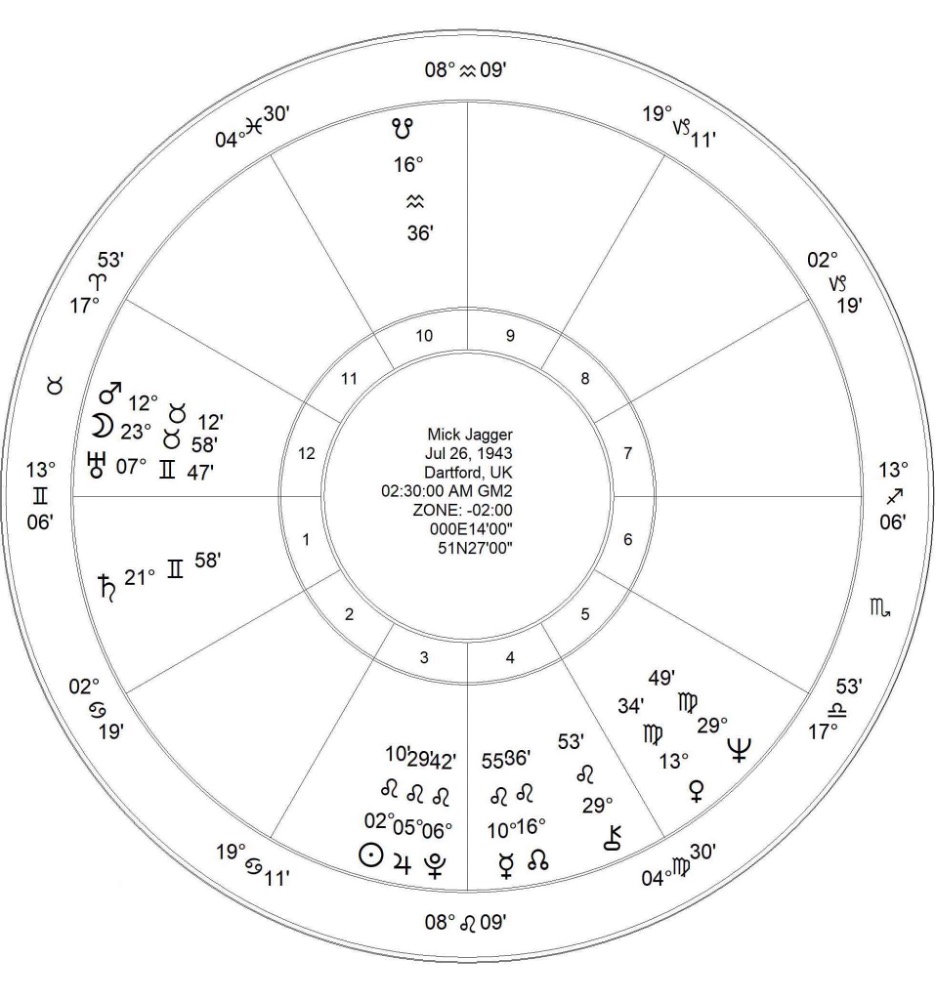

Like the 5th house, Leo relates to performance – once again, that’s no surprise. It’s where the 4th house placement of his Mercury enters the picture that everything gets interesting and we really begin to see the signature of a planetary dispositor. The 4th house is deep, internal, and hidden. Those are not the first words to enter our minds when we think of Mick Jagger strutting on the stage!
- But reflect for a moment: is the “sex machine” we see fronting the band the real Mick? Of course not – it’s a performance, quite literally. It is a persona that he has adopted in pursuit of his craft.
I once heard a cute quote from one of Mick Jagger’s daughters when she was young – “Everybody thinks my father is the devil and he lets them think that.” She obviously “had his number” – but probably that was because he had given it to her in the intimate domestic context of 4th house privacy, trust, and confidentiality.
- Applying our principles regarding the dispositor, we can see that throughout Mick Jagger’s long career, A Guiding or Governing Principle has been to stick unwaveringly to the public image he created.
- Meanwhile, An Overriding Concern and A Constraining Limitation in his life has been to keep his real self buried in the 4th house, at least in terms of his public identity as a performer.
As a footnote, presumably doing all that has kept him living in something pretty close to a literal palace – that’s a Leo/4th house signature too, and it brings us closer to conventional astrology.
By the way, it is mission-critical for us as astrological counselors to remember that none of this is intended to be critical of Mr. Jagger. It’s just how a dispositor works. His chart is his path, just like yours. He’s followed it – and in this case it appears that he’s done it very well. How many men over the age of eighty can convince the world that they’re still dangerous sex machines?
Sometimes one planet disposits all the rest of the planets in a chart. For that to even be a possibility, two conditions have to be met. First, there has to be a planet in the sign it rules. Second, there can be no other planets in the signs they rule. If those two conditions are met, there is a chance that the single planet occupying its own sign might be the final dispositor of the chart. To find out, you have to follow the chains of rulership and see if they all lead back to that first planet.
Here’s an example of what that looks like – and note the “dispositor tree” on the right side. That shows these lines of power and how they all trace back, in this case, to the Sun.
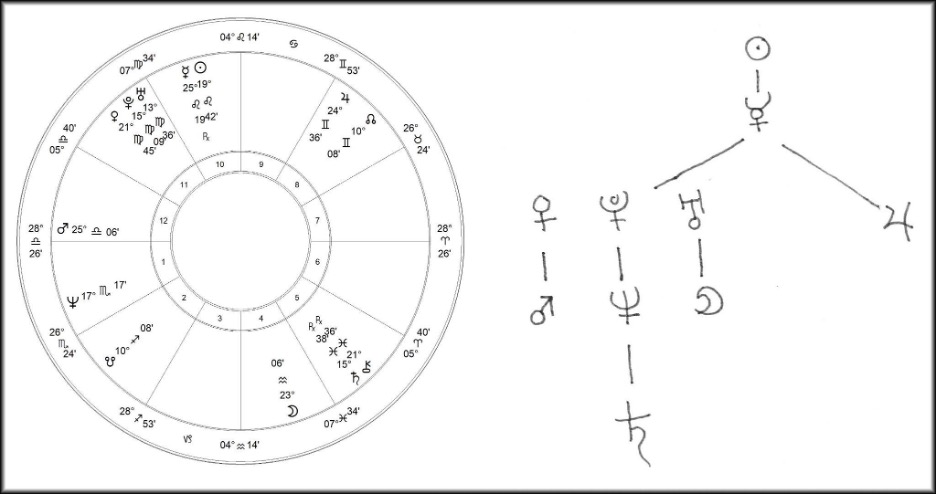
- The Sun is in Leo, the sign it rules.
- No other planet is in that “dignified” condition.
- The Sun disposits Mercury, which through Virgo, disposits Venus, Pluto, and Uranus. Through Gemini, that same Mercury disposits Jupiter.
- Venus disposits Mars and Uranus disposits the Moon, while Pluto disposits Neptune – which finally disposits Saturn. That’s everything.
Without knowing about dispositors, we would have no trouble respecting the strength of a Leo Sun in the 10th house! But now we see that reality spelled out even more clearly – how the pressures and possibilities of a Leo “mission” in the world completely “govern, override, and constrain” this person’s life.
Most charts don’t have final dispositors like this, but you’ll often find a long chain that leads back to one single planet. Look at the realities of the person’s life, and you’ll see an elevated level of influence wielded by that planet. Once again, it “governs, guides, and constrains” almost everything – at least almost everything in the realm of the planets it disposits.
As I mentioned, we’ve placed a similar version of this essay as a handout in FCEA101 – very early in our school curriculum, in other words. All in all, it feels right to do that. Dispositors are an elemental piece of astrological theory, one that’s inseparable ultimately from the whole idea of rulership. It feels right that we introduce the word pretty much from the beginning of a person’s astrological studies. My only hesitation is about overloading our 101 students with too many technicalities, especially ones that might not deserve to be up there on equal footing with the foundational basics of signs, planets, houses, and aspects.
The bottom line is that knowing about dispositors is something we should probably hear about in the 3rd grade – but then revisit when we get to college.
Tending to Wisdom’s Sacred Flame
Tending to Wisdom’s Sacred Flame
Dean’s Update, November 2023
Tending to Wisdom’s Sacred Flame
 Greetings, FCEA community! The holidays are here and solstice is almost upon us. 2024 is just around the corner. We are excited for a new year of growth and expansion of the FCEA program in the year ahead. I feel so blessed to have all of you as my friends and colleagues. What a pleasure to work each day with fellow passionate evolutionary astrologers, learning and practicing Steven’s methods and sharing wisdom.
Greetings, FCEA community! The holidays are here and solstice is almost upon us. 2024 is just around the corner. We are excited for a new year of growth and expansion of the FCEA program in the year ahead. I feel so blessed to have all of you as my friends and colleagues. What a pleasure to work each day with fellow passionate evolutionary astrologers, learning and practicing Steven’s methods and sharing wisdom.
Next year, we will see our very first graduating class finish their studies and receive master certification. Congratulations for all your hard work, master practicum students! It has been a pleasure to join you in your educational journey these past three years. I learned so much from you every step of the way! I am confident your skills and gifts as evolutionary astrologers will help many souls discover the fine nuances of their birthchart and that you will offer precious words of counsel in the years ahead.
We are excited to open FCEA 401: Sacred Counsel in January. This counseling course will complete the FCEA degree program, providing critical assistance in perhaps the most important aspects of our jobs as evolutionary astrologers. How best do we work one-on-one with clients, how do we lay the foundation for a strong rapport and how do we resolve potential conflicts or wrestle with obstacles inevitable in the counseling room? How do we best honor diversity, recognize and respect each individual coming to us for guidance? And then how do we care for ourselves while doing this critical work of service? We developed a series of modules to help you reflect upon these important topics. We see FCEA 401 as a final step, an essential one, in bringing the FCEA educational journey to certification to completion.
Hold tight! More 400-level classes addressing various advanced topics will be available in the near future as course electives as well. We have been growing slowly with care under Saturn’s practical limits (the ringed planet is in the FCEA’s 10th house by transit as I write, soon to enter the 11th next year), while we plan for Jupiter crossing the school’s ascendant in late May.
As we grow in size, Steven and I have high hopes for expanding the richness and diversity of course offerings in the year ahead. The journey continues. We are excited! We hope you are too.
As the year comes to a close, I have one sad announcement. After two years of work with us, Tutor Bryan Colter will be leaving us in order to pursue some of his own independent projects as an evolutionary astrologer. Bryan has played a critical role as tutor and mentor for our 300-level students, leading a much-loved Saturday Zoom class. Bryan has been so committed and supportive of our whole community, gracing us with his wisdom, kindness and love. We wish him all the best in his future endeavors! Thank you, Bryan, for all your hard work and talents. We will miss you so much.
We close down the FCEA doors for the holiday season from December 1st through January 10th. Last study group call is November 21st. Registration is still open during the holiday break and self-paced courses remain in full swing.
Before I end, let me share with you our excitement over our upcoming Holiday Celebration on November 30th at 5:00 pm Pacific time. Steven will address the upcoming Jupiter and Uranus conjunction in Taurus next spring. Such a rich topic! How do we have faith and hope in 2024 and yet contemplate the Uranian surprises undoubtedly in the works for all of us? We will open the conversation up for questions and sharing in a holiday spirit of love and community. Please join us! Happy Holidays to all!
Catie Cadge, PhD
November 2023
Questions Touching on Shadow Work
Questions Touching on Shadow Work
Dean’s Update, October 2023
Questions Touching on Shadow Work
We are just about in the middle of our fall semester here at the FCEA. Always around this time, we have our mid-course Q&A Zoom calls. I love getting a chance to connect and touch base with so many of you! This fall, I am glad to hear our courses are going so well. But we are at the start of Scorpio season now, so I am going to dive into the truth, even if it involves a little “shadow work.” You see I’d like to encourage more students to take an active interest in attending our class orientation and Q&A calls. Sometimes students mention they want more Zoom interaction at the FCEA. These calls are a PERFECT way to do just that! Hmmm…why do students say they want more Zoom, but then not follow up with attending?
We typically have a good attendance for the mid-course Q&A calls, but still we often miss a good third of our class enrollment. Why is this so? Students often love our Zoom calls, where everyone gets to meet the teacher and tutors, as well as fellow classmates. So I am giving a big “shout out” – please try to attend our course calls. The calls are always recorded, but having a live conversation with the teacher or a tutor is so helpful. We are here to answer questions and share chart analysis together. The opportunity is always there.
On a similar note, we have created new courses: 101Z and 201Z, composed entirely of Zoom interaction with a tutor and a small group of classmates. We listened to your request for more Zoom learning experiences. However, again, enrollment needs a boost. The class enrollment is limited to five students and we need four to make them run. We have yet to see many students following through on enrollment and taking an active interest in these new classes. Please consider them an option in 2024!
I also want to share with everyone that the structure of the FCEA curriculum has a really clear mission and design. We start off with Zoom interaction through the orientation and Q&A calls for the new folks working through the 100-level and continue this basic approach into the 200-intermediate level. Steven and I chose to make most of the student contact occur in written format at these early stages, because we believe learning best takes place when students actively apply what they are learning.
Now don’t get me wrong – I do see the value of our course Zoom calls and also our popular study group calls on Zoom. But such methods of instruction emphasize passive learning, when many students sit back and listen and less time is involved with putting both our mind and heart to applying our skills in chart analysis. Just pay attention to these calls – mostly the same students speak up and, well, some students simply remain quiet, while a tutor takes center stage. In FCEA 103 and 200-level FCEA classes, students must take an active interest in posting in discussions and completing written assignments. And it is hard work! First and foremost, we hope to train talented and skilled evolutionary astrologers who can do the work. But it just takes patience to see it unfold.
Recently, I had an email exchange with one of our advanced 300-level students currently taking the 306 Master Practicum with Steven and myself (she humbly asked to remain anonymous). She shared with me how impressed she was by the sheer talent and thorough work her classmates demonstrated. Steven and I totally agree! It is truly a gift to listen to them explain chart analysis in our 306 Practicum class. Their comments are clear, concise, and beautifully spoken. In response to our discussion about how well the 306 students were doing this fall, this advanced student shared with me:
“I was reflecting yesterday on how impressive my fellow 306 classmates’ interpretations have been, and I can look back and see it is a result of the program slowly becoming more complex over the last 3 years! It seems to me that a student who doesn’t participate fully would have a very hard time in the 300 levels, so I’m happy that you have set this standard.”
Please try to see the beauty of participating and working diligently to learn our sacred craft. Realize homework and written analysis in forums are invaluable as learning tools. I am confident you too will feel eventually like this 306 student does today!
In the 300-level classes, you enter the next stage in the FCEA “ladder” of learning. It is worth the wait. Once doing the difficult tasks of thinking, writing and applying your skills through forums and assignments, advanced students hone their skills through class presentations and Zoom dialog with a tutor in conjunction with written work. And we are improving these 300-level courses each time we offer them. We are fine-tuning our course scheduling in advance to better assist students to find times the Zoom sessions will work for them. In 2024, we anticipate offering meeting times and days in advance as best as possible to help smooth this transition from 200- to 300-level class participation. We listen to you and we are making strides to improve our classes each step of the way.
Catie Cadge, PhD
October 2023
Launching The Master Practicum
Launching The Master Practicum
Master’s Musings, October 2023
Launching The Master Practicum
On Monday, September 25, we had our first meeting of our long-awaited master class – FCEA-306. Fifteen students were enrolled, and fourteen were present. The course will run for a total of seven weeks, with each session 90 minutes in length. The first one went smoothly, as did the next two. We seem to have found the right template for making the process work – more about that in a moment.
Personally, seeing FCEA-306 finally happening was a happy moment for me. I’d actually been waiting for it since March 6, 2019, which is a long time! That was the day that Catie, Jeff Parrett, and I committed to creating the school. Altruistically, my motivation in launching the FCEA was to make sure that this form of evolutionary astrology would outlive me, but I had a more personal motivation too. I felt that the best use of my remaining time on Earth lay in teaching more advanced forms of astrology to serious students. That meant master classes! I knew in order to make space in my life for that, I would need to cut back on teaching the basics over and over again.
The dilemma was that in order to be in a position to have master classes, we needed some masters! People like that are not the products of weekend workshops. Astrological mastery comes with time and commitment. We had to wait about three years for the FCEA’s first wave of students to make their way through the foundational courses and get to the point where they were ready for me to work with them individually.
Exactly how to do that was the problem. Ideally, each student would do a complete analysis of a birthchart, a transits-progressions situation, and a synastry. I would listen to all three and offer personal feedback and support. Multiply that by fifteen students and it was clear that time was going to be an insurmountable problem. Catie and I had to get creative. Seven classes of 90 minutes meant that we had a total of just over ten hours to work with. That meant about 40 minutes per student. How could we best use that time?
The plan we came up with seems to be working very well. Each week we assign a single chart to the class in advance. We encourage the students to study it as if they were preparing to do a consultation for the person – to be ready for anything, in other words. When the class meets, Catie and I take turns asking specific questions about the chart. For example, we might ask something technical – say, a prominent Venus-Uranus opposition. Or we might ask a more general, integrative question, such as how would you counsel this person about career? Then we roll the drums. I reach into a hat and pull out a random number. Each number corresponds to one of the students in the class. That student is then invited to take about ten minutes or so to respond to our question. I let them run with it for a while, then I coach them a little further, helping them polish their comments and insights.
Once a person’s number has been pulled from the hat, we set it aside – that way, we’ll make sure that everyone has had a turn before anyone is called upon a second time.
In that first class, we worked with five students. I found that number very encouraging since it means that all the students are likely to get at least two or three opportunities to share their knowledge over the total of seven weeks in the class.
The first four of the weekly sessions will involve looking at a natal chart. Then two will be transits-progressions situations and one will be a synastry. We’ll use the same four natal charts for all seven sessions. The reason is simple: to do a good transits-progressions analysis or a synastry, you need to understand the natal charts thoroughly. That takes time, which is in short supply with only ten hours of class time. It seemed more efficient to build on the knowledge we had all gained from looking at those four natal charts earlier in the program. The first chart, in fact, was “Matthias Brown,” who had already made an appearance earlier in the curriculum.
Our four natal charts are fictional – there are no famous people or anyone we know personally. It’s pure astrology, in other words. Still, all astrologers are helped if they know a little bit about someone’s practical situation. That’s because there’s much that’s relevant to life but which cannot be seen in a chart – for instance, a person’s current relationship status, or some specific circumstance that overshadows everything, like maybe they’re fabulously wealthy or in a wheelchair or serving time in prison. We can always do helpful astrology while only knowing the date, time, and place of a person’s birth – but knowing a bit more helps us to speak more clearly. To help out, I constructed short biographies for each of our four fictional characters. Those are available to all of our FCEA306 students in advance too.
I mentioned that we had fifteen students signed up for the class and only fourteen present. Absent was our friend, Cezary Piscorz. He was a victim of our frustrating Time Zone problem. It is an absolute joy to me that our FCEA student body is so international, but it does create insoluble scheduling problems. Our class started at 5:00 pm-Pacific Time – which would have been the wee hours of a Tuesday morning for poor Cezary! (That time worked out all right for everyone else, although naturally it was easier for some than for others.)
For Cezary, we’ve made a special arrangement. One of our seven classes will occur at 8:00 am-Pacific Time, which is late afternoon for him (and awkward for some other class members). On that day, we will suspend our usual process of pulling a number from a hat and just start with Cezary. He can catch the rest of the classes via recordings, but we’ll miss his lively presence at our meetings.
I want to thank Cezary for his patience and understanding. Meanwhile I want to applaud this first wave of FCEA master astrologers-in-the-making individually by name. Thank you, Cezary, Raine, Sophie Salanat, Lauren Neubauer, Karla Smith, Lelia Thell, Lidia Ranieri, Linda Walker, Barb McNemar, Paula Crall. Teema Loeffeholz, Alan Egge, Sharon Kruger, Kimberly Blanchette, and Jackie Johanasen.
I’m proud of all of you!
Steven Forrest
October 2023
Meet Our Four New Tutors
Meet Our Four New Tutors
Dean’s Update, September 2023
Meet Our Four New Tutors
Greetings, FCEA family! I write to you on equinox, the start of our fall season here in California. The Sun’s ingress into Libra sets the stage for us to work closely one on one and help each other calm down and find peace in learning our sacred craft. The south node in Libra and north node in Aries ask us to move beyond superficial pleasantries and have the courage to take the initiative in forging our path. In this spirit of both collaboration and stepping into new frontiers in bold Aries fashion, I am thrilled to announce that we have hired four new outstanding tutors to join our growing FCEA team. We welcome Fern Vuchinich, Lisa Jones, Harry Farmer and Vernon Robinson. They began serving as tutors at the end of June. This month, they officially come on board, so expect to see them in several classes this fall and in 2024.
Let me take a moment to briefly introduce them to you.
Fern Vuchinich
 Fern Vuchinich and I met through the Southern California apprenticeship program (AP) with Steven prior to the opening of the FCEA. I am so happy to have her working for us. Fern began walking the “astrological path” over 30 years ago after receiving her first professional astrology reading in college. Around this time she also met and started learning from her first mentor Asata Gabriel. Artist, astrologer and all-around wise woman, Gabriel taught Fern over the course of 25 years about astrology, intuition, technology, plant medicine and so much more. In 2006 Fern joined Steven Forrest’s Southern California AP, which she returned to several years in a row. She received Forrest certification as a Master Astrologer in 2018. Fern has been a practicing counseling astrologer and teacher since 2003. She has published widely, specializing in Ancestral Astrology work. Fern has also received advanced training and degrees in many modalities of healing including: acupressure, essential oils, energy healing, flower essences and bodywork (eastern and western). She has been a teacher for all ages and holds an M.A. from Sonoma State University and a teaching credential from San Francisco State University. As a Virgo Sun, Libra Rising with Venus in Cancer she enjoys gardening, making herbal remedies and nesting. She resides with her partner and dog family in the mountains of Northern New Mexico.
Fern Vuchinich and I met through the Southern California apprenticeship program (AP) with Steven prior to the opening of the FCEA. I am so happy to have her working for us. Fern began walking the “astrological path” over 30 years ago after receiving her first professional astrology reading in college. Around this time she also met and started learning from her first mentor Asata Gabriel. Artist, astrologer and all-around wise woman, Gabriel taught Fern over the course of 25 years about astrology, intuition, technology, plant medicine and so much more. In 2006 Fern joined Steven Forrest’s Southern California AP, which she returned to several years in a row. She received Forrest certification as a Master Astrologer in 2018. Fern has been a practicing counseling astrologer and teacher since 2003. She has published widely, specializing in Ancestral Astrology work. Fern has also received advanced training and degrees in many modalities of healing including: acupressure, essential oils, energy healing, flower essences and bodywork (eastern and western). She has been a teacher for all ages and holds an M.A. from Sonoma State University and a teaching credential from San Francisco State University. As a Virgo Sun, Libra Rising with Venus in Cancer she enjoys gardening, making herbal remedies and nesting. She resides with her partner and dog family in the mountains of Northern New Mexico.
Harry Farmer
 I learned about Harry Farmer’s skills from our tutor, Ryan Evans, who knew Harry from the Northern California AP with Steven. A lifetime resident of California, astrology entered Harry Farmer’s life in his mid-late 20’s, soon becoming a source of deep understanding of his life’s journey, as well as providing support and clarity during very challenging times. And while for many years he had a quite active astrology practice, serving clients, writing columns and articles, and doing a daily radio cosmic weather forecast, other professional opportunities have needed to be addressed over the years, from working in a mental hospital for the criminally insane, to many successful years as a disc jockey/interview host, gardener and environmentalist, to currently serving on the Board of Directors of the local Water and Sewer Services District. He also shares daily walks in nature with his current special canine companion Chiron. His first love continues to be astrology, assisting others in having a greater awareness of themselves and their own unique life purpose, providing insight, encouragement, and healing energy, especially in redefining times of crisis as opportunity. He also has very fond memories of many years attending Steven’s Apprentice Workshop in Calistoga, California, sharing joyful and enriching times with fellow astrology students while learning from Steven. Harry is an 11th house Leo, a Capricorn Moon and has strong Virgo placements. A hardworking and passionate teacher, I look forward to working with him.
I learned about Harry Farmer’s skills from our tutor, Ryan Evans, who knew Harry from the Northern California AP with Steven. A lifetime resident of California, astrology entered Harry Farmer’s life in his mid-late 20’s, soon becoming a source of deep understanding of his life’s journey, as well as providing support and clarity during very challenging times. And while for many years he had a quite active astrology practice, serving clients, writing columns and articles, and doing a daily radio cosmic weather forecast, other professional opportunities have needed to be addressed over the years, from working in a mental hospital for the criminally insane, to many successful years as a disc jockey/interview host, gardener and environmentalist, to currently serving on the Board of Directors of the local Water and Sewer Services District. He also shares daily walks in nature with his current special canine companion Chiron. His first love continues to be astrology, assisting others in having a greater awareness of themselves and their own unique life purpose, providing insight, encouragement, and healing energy, especially in redefining times of crisis as opportunity. He also has very fond memories of many years attending Steven’s Apprentice Workshop in Calistoga, California, sharing joyful and enriching times with fellow astrology students while learning from Steven. Harry is an 11th house Leo, a Capricorn Moon and has strong Virgo placements. A hardworking and passionate teacher, I look forward to working with him.
Vernon Robinson
 Vernon Robinson and I have crossed paths over the years first through Steven’s AP, then at numerous conferences. I am excited to have Vernon sharing his many skills with our students. He has been studying astrology for over 30 years and involved in Evolutionary Astrology for the past 20 years. Vernon has been counseling clients for 15 years. He has a Masters Certification in Evolutionary Astrology from Steven Forrest. He attended the last public class taught by Jeffrey Wolf Green in Boulder, Colorado in April, 2004. Vernon has presented at Rocky Mountain Astrology (ROMA), Denver Astrology Group, Northwest Astrology Conference (NORWAC) and the San Francisco Astrology Society (SFAS). He is currently working on research for a book about the astrology chart of the First African Slave Ship coming to Hampton, Virginia in 1619. Vernon is an 8th house Capricorn Sun with a Pisces Moon in the 11th and Taurus ascendant. Surely, he will take FCEA students to a deeper level in their studies with his hard work and caring soul.
Vernon Robinson and I have crossed paths over the years first through Steven’s AP, then at numerous conferences. I am excited to have Vernon sharing his many skills with our students. He has been studying astrology for over 30 years and involved in Evolutionary Astrology for the past 20 years. Vernon has been counseling clients for 15 years. He has a Masters Certification in Evolutionary Astrology from Steven Forrest. He attended the last public class taught by Jeffrey Wolf Green in Boulder, Colorado in April, 2004. Vernon has presented at Rocky Mountain Astrology (ROMA), Denver Astrology Group, Northwest Astrology Conference (NORWAC) and the San Francisco Astrology Society (SFAS). He is currently working on research for a book about the astrology chart of the First African Slave Ship coming to Hampton, Virginia in 1619. Vernon is an 8th house Capricorn Sun with a Pisces Moon in the 11th and Taurus ascendant. Surely, he will take FCEA students to a deeper level in their studies with his hard work and caring soul.
Lisa Jones
 Lisa Jones is last to be introduced, but certainly not least! Lisa and I met “down under” in the Australian AP in 2016 and I immediately sensed Lisa’s passion for evolutionary astrology and Steven’s methods. She shared with me that “she is really thrilled to be part of FCEA world; it is a real honor and is super exciting to be supporting and sharing astrology wisdom with everyone.”
Lisa Jones is last to be introduced, but certainly not least! Lisa and I met “down under” in the Australian AP in 2016 and I immediately sensed Lisa’s passion for evolutionary astrology and Steven’s methods. She shared with me that “she is really thrilled to be part of FCEA world; it is a real honor and is super exciting to be supporting and sharing astrology wisdom with everyone.”
Lisa met Steven over 15 years ago as a modern astrologer. She was fortunate enough to facilitate 20 apprenticeship programs (AP) both in Australia and Europe. Completing master level certification with Steven as well as various studies, including Astrosynthesis certification, a diploma in counseling and group work, and her other love, working with Australian bush flower essences with advanced certification, Lisa creatively nurtures these skills in conjunction with evolutionary astrology. Lisa is presently completing her OPA certification and she is the OPA Australian Satellite. With the Sun in Sagittarius and Moon in Capricorn, both in the 11th house, Lisa feels it was mapped out to be working with groups of people, doing something different!
Very family orientated, with five children and six grandchildren (some of her greatest teachers!) and with a deep appreciation for music, the water and nature, Lisa’s other love of travel has her creating wonderful astrology retreats in various destinations. When at home, her practice is on the east coast of Australia.
Please join us in welcoming Fern, Harry,Vernon and Lisa when you meet them on our Zoom calls or in the classroom online. We are so lucky to have them share with us their astrological wisdom and many talents at the FCEA.
Catie Cadge, PhD
September 2023
Some Thoughts About Reincarnation
Some Thoughts About Reincarnation
Master’s Musings, September 2023
Some Thoughts About Reincarnation
In our Q & A session on August 23rd, our new student, “L,” asked the following question. “Most of us have had many past lives. Which past life is shown in the birth chart? All past lives perhaps? Or the most relevant past life/lives? Or the most recent past life/lives?”
I responded during the call, and if you want to watch the “live” version, remember that if you are an FCEA student or Community Member, all those sessions are recorded, indexed, and always available to you. By the way, we know that for many of you, even here in North America, the timing of these Zoom calls is somewhere between awkward and impossible. Our apologies for that. There really aren’t any good solutions to that problem, other than us seeing to it that recordings are provided.
L’s questions are so fundamental to the practice of evolutionary astrology that I wanted to explore them a little more deeply here in this newsletter. Let me start by saying that it is of course quite possible to adapt our work to accommodate clients who aren’t comfortable with the idea of past lives. We can always talk about ancestral themes, DNA, and so on — or we can just bow deeply before the unknowable mysteries of the universe, and add the observed fact that, whatever the reason, everyone arrives on Earth with an inborn nature and certain astrologically-predictable challenges. In practice, I always ask my clients if the idea of past lives works for them. Only twice, in all the years I’ve been doing this work, has anyone ever said no. One was a professor at Catholic University in Washington D.C. – and he came back three or four years later and told me it was OK to talk about past lives this time. The other was a psychotherapist in Marin County, California — go figure!
First, here’s the simple part. L writes, “Most of us have had many past lives.” I think it’s more accurate to say that we all have had many past lives. Even people for whom this is their first human incarnation have lived in animal bodies. Have you ever met someone who behaved like a baboon, for example? Or like a dog fighting over a bone? For what it’s worth, my personal feeling is that some four-footed beings are ahead of some of us two-footed ones – that the reality is not as simple as “you graduate from animal high school and go to human college.” That’s just my opinion, and many metaphysicians would disagree with me. In fact, let me be clear: pretty much everything you’ll be reading in this essay is nothing but my opinion. Much of it is informed by Buddhism, Ram Dass, Edgar Cayce, and other wise teachers, but all these things are hard to prove or even to investigate in a foolproof way. Take what you like and leave the rest. These are the best truths I know.
L had a few more questions: Which past life is shown in the birth chart? All past lives perhaps? Or the most relevant past life/lives? Or the most recent past life/lives?”
“All past lives” would probably paint your chart black – it would require such a density of symbols that you couldn’t read anything from it at all. The deep truth is that a very great number of prior incarnations in various forms has brought you to where you are today. Fortunately, our techniques of nodal analysis filter all of that past-life information in an extremely radical way. Very little of that information actually gets through. These filters work in a very practical way, only telling you what you need to know. Everything else gets left out. You may have been one of the twelve apostles. Maybe you were Geronimo. You may have been Cleopatra – but if what your soul is working on in this lifetime isn’t connected to those particular past lives, there will be no symbolism in your chart for them.
- Maybe you were indeed “Cleopatra,” but you worked that karma out long ago. It no longer holds you back in any way. Poof – no nodal evidence for that lifetime appears in your birthchart.
- Maybe you were “Cleopatra,” but you’re not yet ready to wrestle with that karma. You’re saving it for a future lifetime when you are wiser and more evolved than you are today. Once again, poof – no nodal evidence for that lifetime appears in the chart.
That’s how the “nodal filters” work. So much of this line of thought is contained in one phrase that most of you have heard me say many, many times: what we see via nodal analysis is unresolved karma that has ripened. “Unresolved” means it’s still holding you back somehow in terms of your evolutionary intentions for this lifetime. “Ripened” means that the time has come for you to deal with it – you’re ready, in other words.
Back to L’s questions:
Which past life is shown in the birth chart?
Answer: the one (or ones) that are actually pressing at you in this present life.
All past lives perhaps?
Answer: definitely not all of them!
Or the most relevant past life/lives?
Answer: L totally nails it here.
Or the most recent past life/lives?
Answer: not necessarily — karma often takes a while to ripen.
I always like to underscore the fact that we don’t read astrological charts the same way that we read newspapers. Symbolism is not literalism. As we do nodal analysis, our aim is to invent a story that resonates emotionally with the person’s actual karma. Liberate yourself from the feeling that you need to find the literal reality of anyone’s prior lifetimes. We can’t do that and we don’t make that indefensible claim, nor do we burden ourselves with that impossible task.
If in a prior life, you were literally a rock star, but I tell you a nodal tale about how you were a movie star, I’ve done my job – that story is close enough to ring the right emotional bells. Same thing if I tell you a story about how you were once a victim of religious persecution and the reality is that you were a victim of racial or gender prejudice. In other words, the story doesn’t need to be literally true in order to be emotionally relevant – and thus capable of triggering a cathartic reaction in the client. Remember: everything starts with the south node of the Moon – we’re talking about the history of the emotional body, not a checklist of biographical “Mercury” facts. We don’t typically remember our past lives in a concrete way. What we remember is what they felt like. That “Moon energy” is what reincarnates with us. That’s where we store the hurt. That’s what we see in the chart. And that’s where we look for the cure.
Built into this line of thinking is another practical point. Most of the time in practicing evolutionary astrology, we tell a single “once upon a time” past-life story. That simplicity may or may not reflect literal reality. Karma, by its very nature, tends to be habitual and repetitive. Might a soul cycle through several lifetimes in which it kept making the same mistake over and over again – marrying the wrong person, for example? Sure! But our single past-life tale covers all of those emotional bases and that’s the point.
Perhaps the most slippery question of them all is one that L didn’t ask. What exactly reincarnates? That’s a conundrum that keeps philosophers and metaphysicians talking until the wee hours.
Here’s how I understand it. I’ve been a Capricorn with an Aries Moon for almost seventy-five years now. After all that time, I’ve gotten pretty used to it. But at the moment my physical body dies, will I still be a Capricorn with an Aries Moon? That’s hard to answer – something of that imprint might survive in my post mortem consciousness for a while. But if we accept reincarnation, we know for sure that when I am reborn, I probably won’t be a Capricorn with an Aries Moon anymore. In other words, what reincarnates will not be my present personality. Among people who are drawn to the idea of reincarnation, there is often a naíve attitude that “you” just come back again in a new body as if nothing had really changed. It’s obviously a lot more complicated than that. The reality is that “you” as a personality are truly dead and gone.
So what else are you besides your personality?
That brings us right back to our slippery question: what reincarnates? Your soul? Here in the western world, we often use that word. Buddhists generally don’t like it. That’s because they aren’t comfortable endorsing the idea of any kind of eternally separate individuality. Instead, they often refer to the mindstream.
In some ways, mindstream is a more rigorous concept. In other ways, I might say what’s the difference? For what it’s worth, I do use the word “soul” myself – but let me explain why “mindstream” works better when we’re wrestling with the profoundest kinds of metaphysical questions, as we are here.
At some undetermined point down the line, I won’t be a Capricorn with an Aries Moon any longer – but, for good or for ill, my mindstream will have been conditioned by all my experiences in this lifetime. In other words, something far bigger and more ancient than my personality will digest everything I’ve learned as Steven Forrest with his Capricorn Sun and his Aries Moon. It will all enter my mindstream. But underlying that immediate addition to my mindstream is another, deeper sedimentary layer – that’s all the accumulated impressions of my own prior lifetimes, digested and turned into feelings, attitudes, understandings . . . and errors, hurts, angers, and so on. My experiences as Steven Forrest will simply join that larger flow.
- The mindstream is what reincarnates, not the personality – but underlying and shaping my future personality is that mindstream. Hopefully, as a result of being myself for all these years, it will be a little wiser and a little clearer.
Purifying that mindstream – teaching it love, not fear, generosity rather than grasping, acceptance, not aggression – is the purpose of life. Your present chart is just your particular current tack on those ancient, eternal challenges. It shows you where you’re stuck and exactly what you need to do to get free.
Think of it like a shirt you’re wearing. You may like it, but tomorrow you’ll take it off and put it in the wash. Personalities are like that. Mindstreams – or souls – are a lot more lasting.





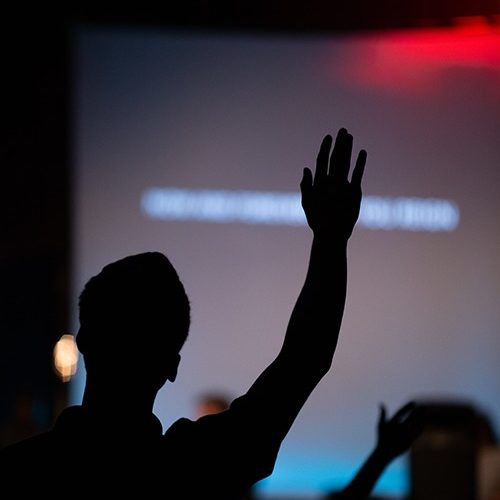
 That question brings us right back to whether or not the FCEA is an attempt to “clone Steven Forrest.” I think the most honest answer is “at first yes, and then ultimately no.” And with that said, we swing back to a point I made right at the beginning of this newsletter – first you learn astrological theory, then you find your own voice. Inevitably your voice will at first probably resemble my own at least to some extent.
That question brings us right back to whether or not the FCEA is an attempt to “clone Steven Forrest.” I think the most honest answer is “at first yes, and then ultimately no.” And with that said, we swing back to a point I made right at the beginning of this newsletter – first you learn astrological theory, then you find your own voice. Inevitably your voice will at first probably resemble my own at least to some extent. 


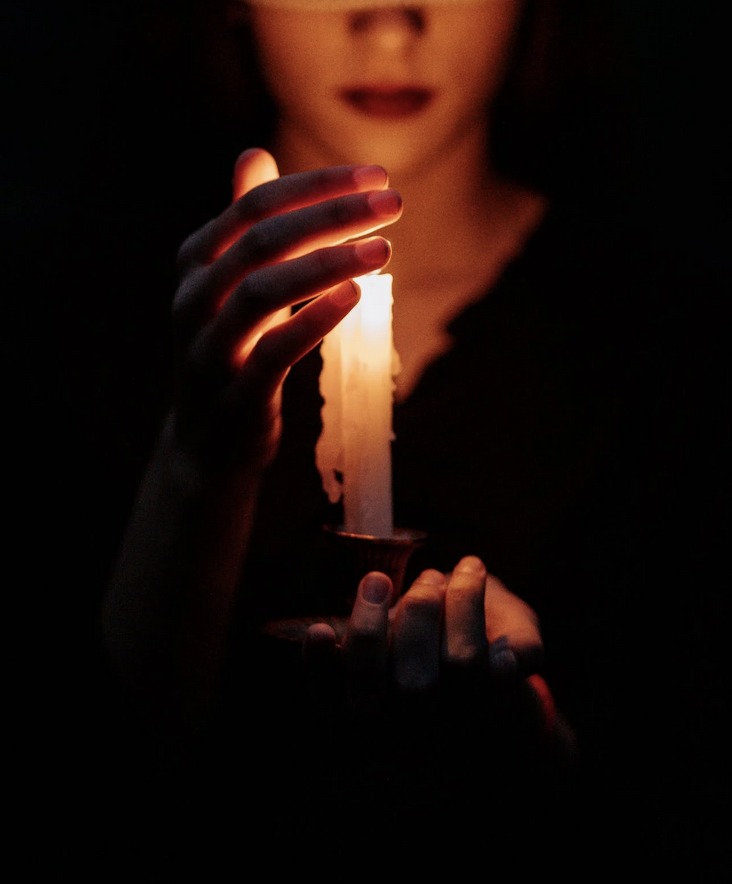
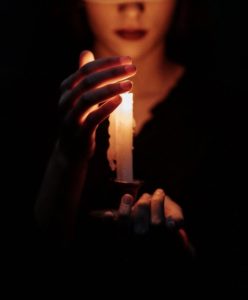 Greetings, FCEA community! The holidays are here and solstice is almost upon us. 2024 is just around the corner. We are excited for a new year of growth and expansion of the FCEA program in the year ahead. I feel so blessed to have all of you as my friends and colleagues. What a pleasure to work each day with fellow passionate evolutionary astrologers, learning and practicing Steven’s methods and sharing wisdom.
Greetings, FCEA community! The holidays are here and solstice is almost upon us. 2024 is just around the corner. We are excited for a new year of growth and expansion of the FCEA program in the year ahead. I feel so blessed to have all of you as my friends and colleagues. What a pleasure to work each day with fellow passionate evolutionary astrologers, learning and practicing Steven’s methods and sharing wisdom. 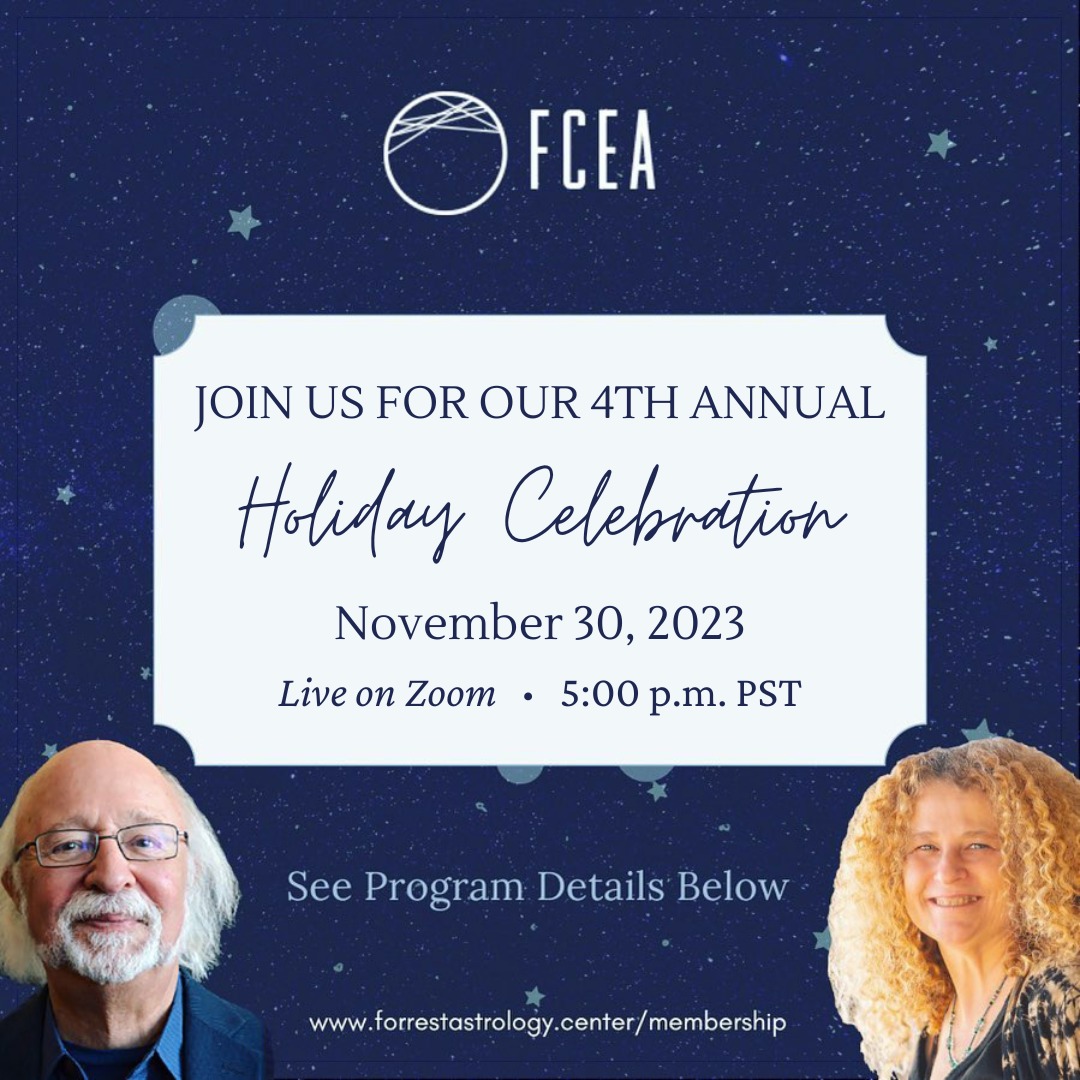


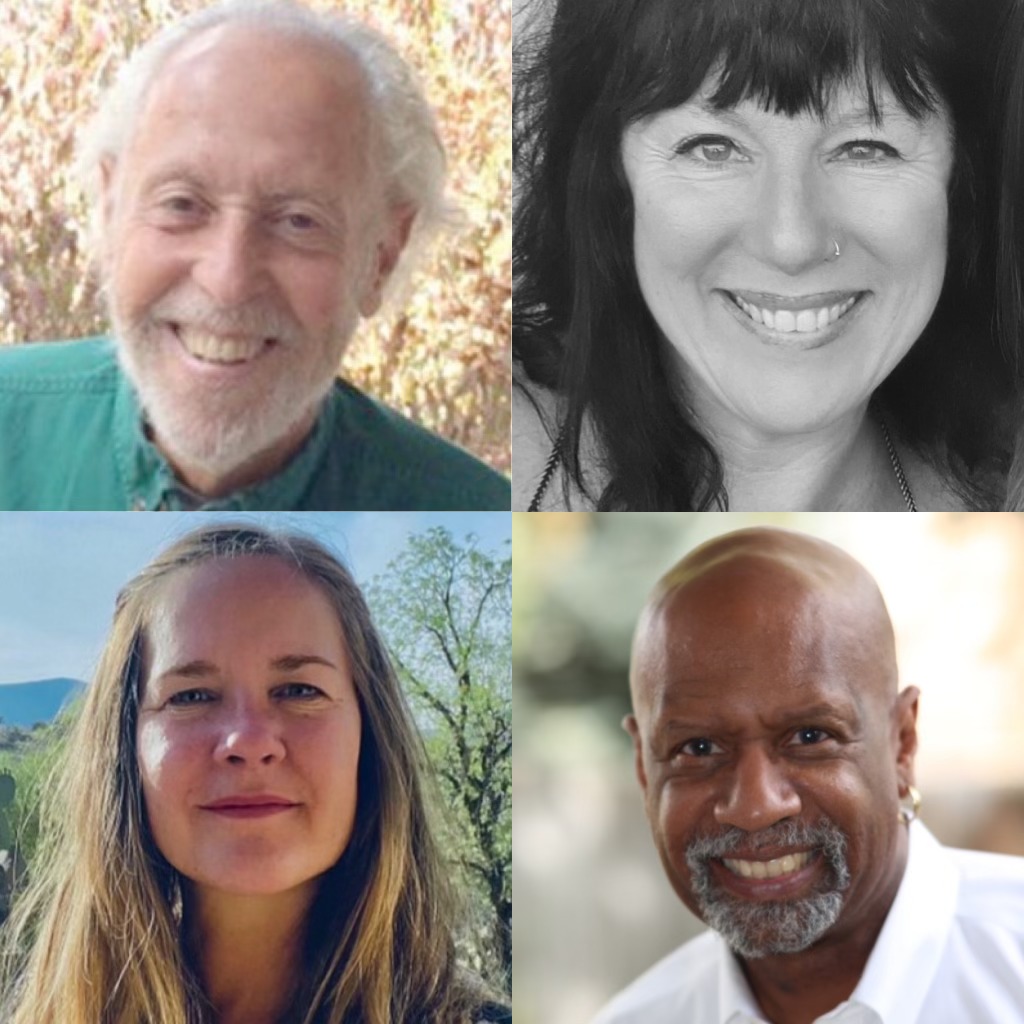
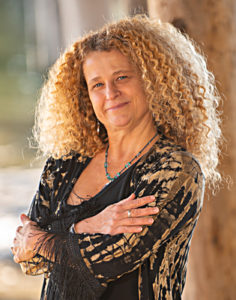
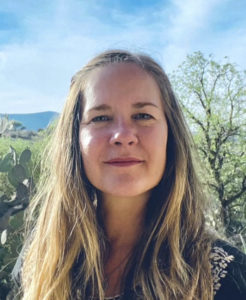 Fern Vuchinich and I met through the Southern California apprenticeship program (AP) with Steven prior to the opening of the FCEA. I am so happy to have her working for us. Fern began walking the “astrological path” over 30 years ago after receiving her first professional astrology reading in college. Around this time she also met and started learning from her first mentor Asata Gabriel. Artist, astrologer and all-around wise woman, Gabriel taught Fern over the course of 25 years about astrology, intuition, technology, plant medicine and so much more. In 2006 Fern joined Steven Forrest’s Southern California AP, which she returned to several years in a row. She received Forrest certification as a Master Astrologer in 2018. Fern has been a practicing counseling astrologer and teacher since 2003. She has published widely, specializing in Ancestral Astrology work. Fern has also received advanced training and degrees in many modalities of healing including: acupressure, essential oils, energy healing, flower essences and bodywork (eastern and western). She has been a teacher for all ages and holds an M.A. from Sonoma State University and a teaching credential from San Francisco State University. As a Virgo Sun, Libra Rising with Venus in Cancer she enjoys gardening, making herbal remedies and nesting. She resides with her partner and dog family in the mountains of Northern New Mexico.
Fern Vuchinich and I met through the Southern California apprenticeship program (AP) with Steven prior to the opening of the FCEA. I am so happy to have her working for us. Fern began walking the “astrological path” over 30 years ago after receiving her first professional astrology reading in college. Around this time she also met and started learning from her first mentor Asata Gabriel. Artist, astrologer and all-around wise woman, Gabriel taught Fern over the course of 25 years about astrology, intuition, technology, plant medicine and so much more. In 2006 Fern joined Steven Forrest’s Southern California AP, which she returned to several years in a row. She received Forrest certification as a Master Astrologer in 2018. Fern has been a practicing counseling astrologer and teacher since 2003. She has published widely, specializing in Ancestral Astrology work. Fern has also received advanced training and degrees in many modalities of healing including: acupressure, essential oils, energy healing, flower essences and bodywork (eastern and western). She has been a teacher for all ages and holds an M.A. from Sonoma State University and a teaching credential from San Francisco State University. As a Virgo Sun, Libra Rising with Venus in Cancer she enjoys gardening, making herbal remedies and nesting. She resides with her partner and dog family in the mountains of Northern New Mexico. I learned about Harry Farmer’s skills from our tutor, Ryan Evans, who knew Harry from the Northern California AP with Steven. A lifetime resident of California, astrology entered Harry Farmer’s life in his mid-late 20’s, soon becoming a source of deep understanding of his life’s journey, as well as providing support and clarity during very challenging times. And while for many years he had a quite active astrology practice, serving clients, writing columns and articles, and doing a daily radio cosmic weather forecast, other professional opportunities have needed to be addressed over the years, from working in a mental hospital for the criminally insane, to many successful years as a disc jockey/interview host, gardener and environmentalist, to currently serving on the Board of Directors of the local Water and Sewer Services District. He also shares daily walks in nature with his current special canine companion Chiron. His first love continues to be astrology, assisting others in having a greater awareness of themselves and their own unique life purpose, providing insight, encouragement, and healing energy, especially in redefining times of crisis as opportunity. He also has very fond memories of many years attending Steven’s Apprentice Workshop in Calistoga, California, sharing joyful and enriching times with fellow astrology students while learning from Steven. Harry is an 11th house Leo, a Capricorn Moon and has strong Virgo placements. A hardworking and passionate teacher, I look forward to working with him.
I learned about Harry Farmer’s skills from our tutor, Ryan Evans, who knew Harry from the Northern California AP with Steven. A lifetime resident of California, astrology entered Harry Farmer’s life in his mid-late 20’s, soon becoming a source of deep understanding of his life’s journey, as well as providing support and clarity during very challenging times. And while for many years he had a quite active astrology practice, serving clients, writing columns and articles, and doing a daily radio cosmic weather forecast, other professional opportunities have needed to be addressed over the years, from working in a mental hospital for the criminally insane, to many successful years as a disc jockey/interview host, gardener and environmentalist, to currently serving on the Board of Directors of the local Water and Sewer Services District. He also shares daily walks in nature with his current special canine companion Chiron. His first love continues to be astrology, assisting others in having a greater awareness of themselves and their own unique life purpose, providing insight, encouragement, and healing energy, especially in redefining times of crisis as opportunity. He also has very fond memories of many years attending Steven’s Apprentice Workshop in Calistoga, California, sharing joyful and enriching times with fellow astrology students while learning from Steven. Harry is an 11th house Leo, a Capricorn Moon and has strong Virgo placements. A hardworking and passionate teacher, I look forward to working with him.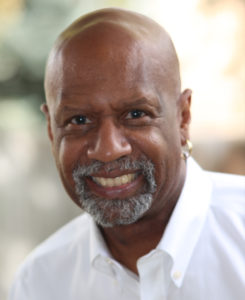 Vernon Robinson and I have crossed paths over the years first through Steven’s AP, then at numerous conferences. I am excited to have Vernon sharing his many skills with our students. He has been studying astrology for over 30 years and involved in Evolutionary Astrology for the past 20 years. Vernon has been counseling clients for 15 years. He has a Masters Certification in Evolutionary Astrology from Steven Forrest. He attended the last public class taught by Jeffrey Wolf Green in Boulder, Colorado in April, 2004. Vernon has presented at Rocky Mountain Astrology (ROMA), Denver Astrology Group, Northwest Astrology Conference (NORWAC) and the San Francisco Astrology Society (SFAS). He is currently working on research for a book about the astrology chart of the First African Slave Ship coming to Hampton, Virginia in 1619. Vernon is an 8th house Capricorn Sun with a Pisces Moon in the 11th and Taurus ascendant. Surely, he will take FCEA students to a deeper level in their studies with his hard work and caring soul.
Vernon Robinson and I have crossed paths over the years first through Steven’s AP, then at numerous conferences. I am excited to have Vernon sharing his many skills with our students. He has been studying astrology for over 30 years and involved in Evolutionary Astrology for the past 20 years. Vernon has been counseling clients for 15 years. He has a Masters Certification in Evolutionary Astrology from Steven Forrest. He attended the last public class taught by Jeffrey Wolf Green in Boulder, Colorado in April, 2004. Vernon has presented at Rocky Mountain Astrology (ROMA), Denver Astrology Group, Northwest Astrology Conference (NORWAC) and the San Francisco Astrology Society (SFAS). He is currently working on research for a book about the astrology chart of the First African Slave Ship coming to Hampton, Virginia in 1619. Vernon is an 8th house Capricorn Sun with a Pisces Moon in the 11th and Taurus ascendant. Surely, he will take FCEA students to a deeper level in their studies with his hard work and caring soul.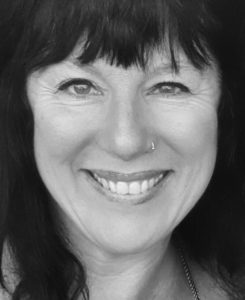 Lisa Jones is last to be introduced, but certainly not least! Lisa and I met “down under” in the Australian AP in 2016 and I immediately sensed Lisa’s passion for evolutionary astrology and Steven’s methods. She shared with me that “she is really thrilled to be part of FCEA world; it is a real honor and is super exciting to be supporting and sharing astrology wisdom with everyone.”
Lisa Jones is last to be introduced, but certainly not least! Lisa and I met “down under” in the Australian AP in 2016 and I immediately sensed Lisa’s passion for evolutionary astrology and Steven’s methods. She shared with me that “she is really thrilled to be part of FCEA world; it is a real honor and is super exciting to be supporting and sharing astrology wisdom with everyone.”